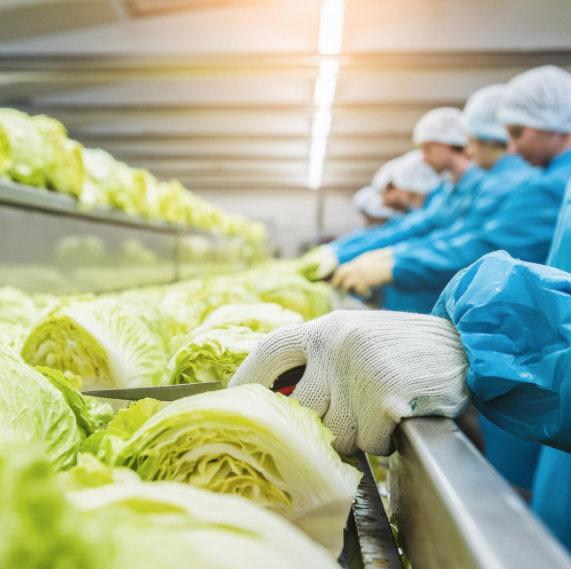Understanding Post-Harvest Food Loss in the Salad Industry
Post-harvest food loss is a significant challenge in the prepared food industry, affecting profitability, sustainability, and food security. Let’s explore some basic causes, impacts, and solutions for post-harvest food loss in the salad industry, relative to growers, processors, and distributors.
The Impact of Post-Harvest Food Loss
Post-harvest food loss refers to the reduction in quantity and quality of food from harvest to consumption. In the salad industry, this loss can be substantial due to poor handling, over handling and the perishable nature of leafy greens like lettuce, spinach, and kale. Key impacts include:
Economic Losses: Reduced yield and quality lead to financial losses for growers and processors.
Environmental Impact: Increased waste contributes to higher greenhouse gas emissions and resource wastage.
Food Security: Reduced availability of fresh produce affects food supply and accessibility.
Causes of Post-Harvest Food Loss in the Salad Industry
Several factors contribute to post-harvest food loss in the salad industry:
Harvesting Practices:
Mechanical Damage: Poor handling during harvesting can cause bruising and damage to delicate salad leaves.
Timing: Harvesting at incorrect maturity stages can lead to quality degradation.
Processing Challenges:
Inefficient De-Coring: Manual de-coring can be inconsistent, leading to excessive waste and reduced quality.
Delayed Processing: Slow processing times can lead to spoilage and contamination.
Storage and Transportation:
Temperature Control: Improper cooling and storage conditions can accelerate spoilage.
Handling: Rough handling during transport can cause physical damage.
Contamination Risks:
Pathogens: Contamination from pathogens like E. coli and Salmonella poses significant food safety risks.
Solutions to Minimize Post-Harvest Food Loss
Addressing post-harvest food loss requires a multifaceted approach involving innovation, technology, and best practices:
Optimizing Harvesting Practices:
Training and Education: Educating workers on best harvesting practices to minimize damage.
Advanced Harvesting Equipment: Using precision harvesting tools to reduce mechanical damage.
Enhancing Processing Efficiency:
Robotic De-Coring Systems: Implementing automated de-coring systems to ensure consistent and precise cutting, reducing waste.
Rapid Processing Workflows: Streamlining processing operations to minimize delays and spoilage.
Improving Storage and Transportation:
Temperature Monitoring: Using advanced cooling and temperature control systems to maintain optimal conditions.
Gentle Handling: Ensuring careful handling during transportation to prevent physical damage.
Ensuring Food Safety:
Sanitation Protocols: Strict adherence to sanitation protocols to prevent contamination.
Automated Systems: Utilizing automated processing systems to reduce manual contact points and contamination risks.
Robotically De-Cored Iceberg Lettuce
Extractacore's Role in Reducing Post-Harvest Food Loss
We are committed to addressing post-harvest food loss through innovation tailored for the salad industry:
Advanced Robotic De-Coring Equipment: Our efficient de-coring systems ensure precise cutting, reduced waste and enhanced yield.
Efficient Processing Technologies: Our rapid processing systems minimize delays, maintaining the quality and safety of salad produce.
Hygienic Design: Our equipment is designed with hygiene in mind, reducing contamination risks and ensuring food safety.
Conclusion
Minimal food Loss with Robotic processing
Reducing post-harvest food loss in the salad industry requires a multifaceted approach, involving advanced technologies, optimized logistics, and best practices in handling and storage. By addressing these challenges head-on, the industry can improve sustainability, profitability, and food security. We concentrate on providing the tools needed to help this transformation.
Reach out to find out how you can reduce post-harvest food loss in your operations.



